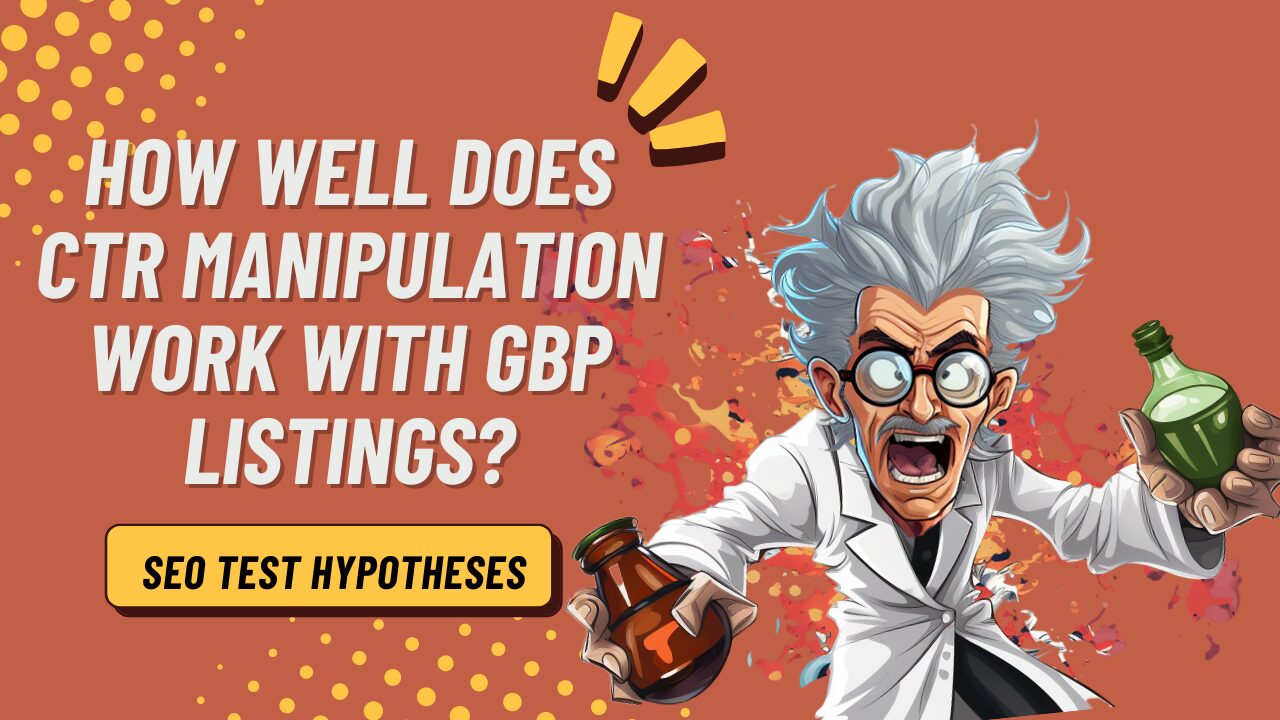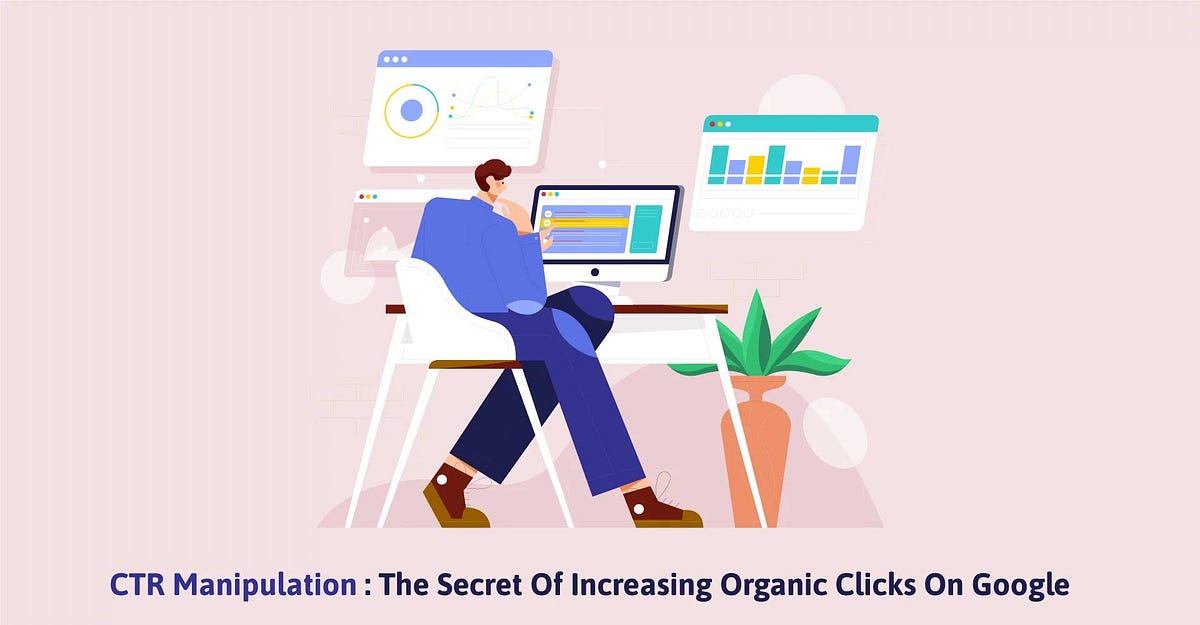Enhancing Organic Click-Through Rates With CTR Manipulation
The optimization of organic click-through rates (CTR) is a nuanced endeavor that hinges on recognizing both individual psychology and efficient material presentation. The landscape is rife with misconceptions and oversimplifications about what truly drives CTR.
Recognizing Click-Through Rates
Understanding click-through prices (CTR) is crucial for reviewing the performance of internet marketing techniques. CTR determines the portion of customers who click on a particular web link or promotion compared to the total variety of individuals who watch it. A greater CTR indicates that the material is involving and appropriate to the target audience, while a reduced CTR may signal a demand for optimization.
To calculate CTR, divide the variety of clicks by the number of impacts and increase by 100. If an ad obtains 300 clicks out of 10,000 impacts, the CTR would certainly be 3%. This metric is essential for assessing different elements of electronic advertising, including seo (SEO), email projects, and social networks advertising and marketing.
Additionally, examining CTR assists online marketers recognize which techniques generate the most effective outcomes and which require improvement. By concentrating on boosting CTR, companies can boost their content's exposure and efficiency, leading to enhanced website traffic and potential conversions. Comprehending the subtleties of CTR is foundational for any type of online marketer intending to optimize their on-line presence and optimize roi (ROI)

The Psychology of User Behavior
Customer actions is dramatically affected by mental elements that dictate exactly how individuals connect with online material. Comprehending these elements is vital for optimizing click-through rates (CTR) in natural search engine result. Cognitive biases, such as the anchoring effect, play a critical function in forming customers' assumptions. Their first perceptions can greatly influence their subsequent judgments regarding significance and reliability. when users experience info.
Psychological reactions additionally significantly effect user actions. Web content that reverberates mentally can set off a sense of urgency or interest, triggering customers to click. Furthermore, social proof-- such as individual testimonials or rankings-- can improve trust fund and motivate interaction, as people usually aim to the habits of others to notify their very own choices.
In addition, the concept of deficiency can drive clicks - LinkDaddy CTR Manipulation. Limited-time deals or exclusive content create a concern of missing out on out (FOMO), compelling individuals to act swiftly. Understanding these emotional vehicle drivers enables online marketers to create even more compelling content that resonates with their target audience
Efficient CTR Adjustment Strategies
Leveraging emotional understandings can significantly enhance click-through rates (CTR) through targeted manipulation strategies. One of one of the most reliable approaches is using engaging headings that stimulate interest or seriousness. Phrasing titles as questions or incorporating numbers can attract more attention, motivating customers to click.
An additional method index involves optimizing meta summaries to produce a feeling of significance and immediacy. By plainly outlining the advantages or options provided in the web content, you can involve prospective readers and encourage them to click. Furthermore, utilizing power words-- such as "special," "verified," or "totally free"-- can enhance the allure of your material.
Visual components likewise play a critical role. Incorporating distinctive pictures or thumbnails can draw customers in and improve CTR. A/B screening different visuals can aid identify which photos resonate ideal with your audience.
Finally, ensuring that your web content assures deliverable value brings about higher CTR. They are more most likely to involve when users view that clicking will certainly provide them with significant insights or services. By using these methods attentively, marketing professionals can effectively control CTR to their benefit while preserving honest requirements.
Common Myths Concerning CTR
Numerous misunderstandings surround click-through rates (CTR) that can lead marketing professionals to make illinformed choices. While a high CTR recommends that even more customers are clicking, it does not assure sales or conversions.
One more typical belief is that CTR is a separated metric. Actually, CTR needs to be reviewed in combination with other performance indications, such as bounce price and conversion rate, to acquire an alternative view of campaign success.
Additionally, some marketers presume that maximizing for CTR alone is sufficient. However, focusing specifically on CTR can result in clickbait methods that might draw in clicks but fail to involve individuals meaningfully. This technique can harm brand name credibility and cause lower retention prices
Finally, there is a concept that CTR methods are universally click resources efficient. The reality is that optimum CTR techniques can differ substantially across markets and target audiences, requiring customized approaches for various market sectors. Comprehending these misconceptions is vital for developing efficient CTR strategies that line up with overarching advertising goals.
Determining CTR Success
Although high click-through prices (CTR) can indicate successful involvement with content, determining their real success calls for a thorough analysis of a number of elements. Initially, it is important to recognize the context in which the CTR is accomplished. For example, a high CTR on a misleading title might not translate to purposeful interaction or conversions, eventually mirroring poorly on the brand's reliability.
2nd, reviewing the source of web traffic is important. Organic website traffic from online search engine can signify a durable web content technique, while clicks from pointless resources might suggest an absence of targeting. Furthermore, measuring the subsequent user behavior is vital; analyzing metrics such as bounce rate, time invested in page, and conversion rates can offer deeper understandings into the quality of the interaction initiated by the CTR.

Final Thought

The optimization of natural click-through rates (CTR) is a nuanced venture that hinges on comprehending both customer psychology and efficient web content presentation. CTR gauges the percentage of customers who click on a details link or promotion compared to the total number of individuals that see it. A greater CTR indicates that the material is involving and appropriate to the target audience, while a reduced CTR may indicate a requirement for optimization.
Focusing solely on CTR can lead to clickbait methods that may draw in clicks yet fail to engage individuals meaningfully. In addition, measuring the succeeding individual habits is essential; evaluating metrics such as bounce price, time invested on page, and conversion rates can supply much deeper insights into the high quality of the interaction started by the CTR.